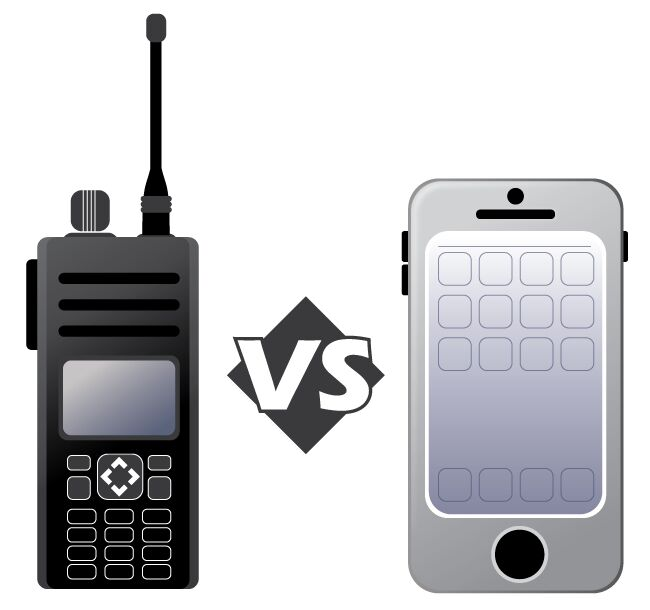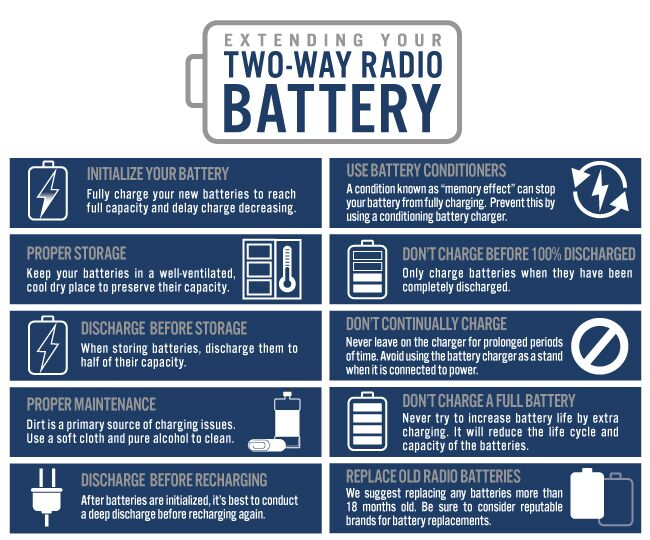When deciding on VHF or UHF, it depends on several factors. If you are indoors or somewhere with a lot of obstructions, use UHF. These would be places like school buildings, hotels, hospitals, construction sites, retail, warehouses, or a college campus. These areas have lots of buildings, walls, and other obstructions where UHF is better equipped to handle.
If you are in areas free of obstruction you should use VHF. These would be road construction, farming, agriculture, ranch work, etc.

Many people wonder why they need a two way radio when they have a cell phone.

While both contain the ability to communicate, that’s about the end of their similarities.
Radios cost much less and do not have monthly service fees, roaming charges, contracts, or data plans.
Radios are built to communicate, that’s it. When clear communication is the goal you don’t want the additional distraction of scrolling, surfing, or searching.
Radios are always preferred in an emergency because of the instant Push-to-Talk capabilities. No need to unlock the phone, search for the contact, dial the number, wait while it rings, and hope they answer.
A radio will have a battery life of at least twice as long as your cell phone battery, some can even last up to 24 hours.
Wattage refers to the amount of power a handheld radio can put out. Most business radios run between 1 to 5 watts. Higher wattage means a larger range of communication.
For example, a radio running at 1 watt should translate to around a mile of coverage, 2 watts may reach up to a 1.5-mile radius and a 5-watt radio may be able to reach up to 6 miles away.
If you are using a two way radio to communicate more than 1 mile apart, chances are you need a radio license. If you’re within 1 mile range and are not communicating for business, you may not need a license.
An example of this might be a family hiking or camping trip, those radios are for personal use and do not require a license. Anytime you use a radio for business or extend your range, you’ll want to check into an license.
Typically, two way radios have a battery life expectancy of 10-12 hours for single use and a lifespan of 18 to 24 months.
This of course depends on the quality of the battery, and how the radio is used. There are ways to maintain your radio battery to increase its lifespan, those steps can be found here.

Two way radios and walkie talkies are often used interchangeably, but they actually aren’t always the same. All walkie talkies are two way radios – they are handheld devices that receive and transmit voice. However, some two way radios aren’t handheld.
For example, a desk mounted radio is a two way radio that receives and transmits messages but isn’t classified as a walkie talkie.
So, if you can walk and communicate at the same time, you’re using a walkie talkie. If you’re sitting at a desk and can’t take the radio with you, you’re using a two way radio.
These are sub-frequencies that filter out other radios user’s transmission to create a clear frequency in the same area.
PL Tone stands for Private Line Tone, DPL is Digital Private Line.
Even when using these sub-frequencies, you can and should still “monitor” the frequency first before transmitting the channel.
Encryption is a method of scrambling the voice signal so that only radios with the encryption code can hear each other.
This prevents other people from listening in on your conversations and is important in sensitive industries like law enforcement, first responders, and hospital use.
Companies, in general, will always overstate their radio range.
Anyone claiming to have a radio that works 30 miles away is likely speaking more theoretically than realistically.
We don’t live in an empty and flat world, and every obstacle around you will affect the range of your two way radio. Terrain, signal type, population, obstruction, and wattage can all affect the range.
For a general estimate, two people around 6 feet tall using a 5-watt handheld two way radio, used on flat ground with no obstacles can expect a maximum range of approximately 6 miles.
You can increase this with a better antenna, or this distance may only reach 4 miles with any number of outside factors.
Absolutely. Renting radios is a great way to receive the benefits of communication at your event without an investment.
If you are planning for the county fair, a local concert, sporting event, conference, trade show, school or church activities, construction changes, etc., two way radios are always a great idea.
